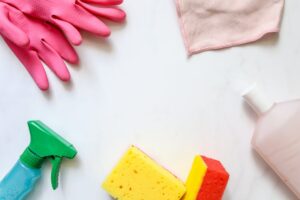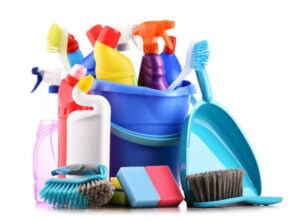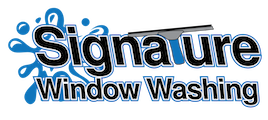 Are you wondering what chemicals are used in softwash?
Are you wondering what chemicals are used in softwash?
Softwashing is a safe and effective way to clean your outdoor surfaces without using a pressure washer. This method involves using chemicals specifically designed for softwashing to remove dirt, grime, mold, and mildew from your siding, roof, brick, concrete, and other exterior surfaces.
In this article, we’ll discuss the key softwashing chemicals, surface preparation, application techniques, and more. Read on to learn more about this cleaning method and how you can use it to keep your outdoor surfaces looking great.
What is Softwashing?
Softwashing is a gentle method of cleaning that uses a combination of low pressure and specialized cleaning solutions to effectively remove dirt, grime, and other contaminants! It is a popular method for cleaning a variety of surfaces, including siding, roofs, walkways, driveways, patios, and decks.
Softwashing services are usually less expensive and far more effective than traditional pressure washing methods. Softwashing uses a biodegradable, environmentally friendly cleaning solution that is sprayed at a low pressure to remove dirt, debris, and other contaminants. The cleaning solution is designed to break down the dirt and grime, making it much easier to remove without damaging the area being cleaned.
Softwashing is a great way to keep your home or business looking its best and to extend the life of your outdoor surfaces.
Softwashing Benefits
You’re probably wondering what the benefits of softwashing are – well, let’s take a look!
Softwashing is a great way to clean and protect the exterior of your home. It uses a combination of detergents, biocides, and other chemicals to safely remove dirt, mold, mildew, and other staining from your home’s exterior.
Plus, softwashing can also help seal and protect the surfaces from future staining. It’s a great way to give your home a makeover without the need for costly and time-consuming power washing and painting.
Plus, hiring a team of professionals to do the job will ensure that it’s done with the utmost care and attention.
Key Softwashing Chemicals
If you’re looking for a great way to clean and protect your home’s exterior, you’ll want to know about the key ingredients used in softwashing that help make it so effective.
Softwashing is a gentle, yet effective way to clean and protect your roof, shingles, and gutters. The key chemicals used in softwashing are typically safe, biodegradable, and non-corrosive. These chemicals help to break down dirt, grime, and other build-up that accumulates on your home’s exterior.
They also help to protect your home from mold, mildew, and other contaminants. Softwashing is an effective way to keep your home looking its best without the use of harsh chemicals.
Surface Preparation
Before softwashing, it’s important to do some surface preparation to ensure the best results. This is especially true for the exterior of a house, deck, brick, concrete, or wood surface.
Depending on the type of material, it may need to be scraped, sanded, or pressure-washed to remove dirt, mold, mildew, and other debris. For wood surfaces, you may need to use a chemical stripper to remove any existing coatings. This is all necessary to ensure that the softwashing chemicals can penetrate the surface and do their job.
After the surface is properly prepared, it’s time to move on to the softwashing process. This will involve applying a unique mix of chemicals that are specifically designed to clean and protect the exterior of your house, deck, brick, concrete, or wood surface.
It’s important to use the right mix of chemicals to ensure the best results and to avoid damaging the surface.
Application Techniques
Once the surface is prepared, it’s time to apply the softwashing solution with the right techniques for optimal results.
When softwashing a driveway, it’s important to use an even and consistent coating, making sure to get in tight corners and crevices. The same is true for a sidewalk, stone, asphalt, or tile surface.
It’s important to use the right pressure setting for the material you’re cleaning. For driveways, you should use a higher setting to break up dirt and grime, while a lower setting should be used for more delicate surfaces like stone, asphalt, and tile.
After you’ve applied the solution, give it time to soak in and do its job. This will ensure that the softwashing solution can do its job and provide the desired results.
Safety Considerations
 Softwashing can be a safe and effective cleaning method, yet it’s important to take safety precautions to reduce the risks associated with working with cleaning solutions.
Softwashing can be a safe and effective cleaning method, yet it’s important to take safety precautions to reduce the risks associated with working with cleaning solutions.
When working with metal surfaces, make sure to estimate the dilution rate for the cleaning solution to reduce the risk of damage.
Additionally, when working with a fence, always make sure to wear protective eyewear and gloves to avoid any contact with the chemicals used in softwashing.
It’s also important to always read and follow all safety instructions on the product labels.
Taking all these safety considerations into account will help keep you safe while softwashing.
Pressure Washing vs Softwashing
Pressure washing and softwashing may seem similar, but they involve different techniques and can achieve different results.
Pressure washing uses high-pressure water to blast away dirt and debris from surfaces like siding, porches, and patios.
Softwashing, on the other hand, relies on low-pressure rinsing and special cleaning solutions to remove contaminants from delicate surfaces like stucco and vinyl. It is often more effective than pressure washing and can prevent the growth of algae and other organisms.
Remember to use contractions when writing.
Equipment and Tools
Whether you’re pressure washing or softwashing, you’ll need the right equipment and tools to get the job done right.
Softwashing requires a specialized setup, including a low-pressure sprayer, a chemical tank, and a garden hose.
For pressure washing, you’ll need a pressure washer, a hose, and appropriate cleaning solutions. You’ll also need a ladder and other necessary tools for reaching higher surfaces.
The chemicals used in softwashing vary depending on the project. Commonly used chemicals include sodium hypochlorite, sodium hydroxide, and potassium hydroxide.
These chemicals are designed to break down organic matter, such as algae, mold, mildew, and dirt. They also help to reduce staining, and are safe to use on most surfaces.
Other softwash chemicals such as surfactants, bleaches, and hydrogen peroxide can be used to get specific results.
Softwash Cleaning Solutions
You’ll find a variety of specialized cleaning solutions for softwashing, all designed to break down organic matter and reduce staining. These cleaning solutions typically contain a combination of sodium hypochlorite, which is a type of bleach, and surfactants, which are detergents that reduce the surface tension of the solution and help to spread it evenly over the surface.
Other common chemicals found in softwashing solutions are chelants, which are used to break down mineral deposits, and sequestrants, which are used to prevent the formation of scale. Softwashing also uses slightly acidic solutions, such as citric acid or phosphoric acid, to help remove difficult stains and grime.
All of these chemicals work together to help remove dirt and grime from surfaces without damaging them.
Maintenance Tips

Now that you know what softwash cleaning solutions are, it’s time to learn the best maintenance tips to keep your surfaces looking like new.
First and foremost, regularly rinse off your surfaces with water to remove any dirt, dust, and other debris that accumulates over time. This will also help to prevent the buildup of any chemicals that may have been used in the softwash process.
Additionally, you should add a protective sealant to your surfaces to lock in moisture and to prevent any staining or discoloration. Reapply the sealant every 6-12 months to ensure long-lasting protection.
Finally, make sure to regularly clean the surface with a soft cloth and a mild detergent after every softwash. Doing so will help to prevent any staining or discoloration while also helping to keep the surface looking like new.
Conclusion
You’ve seen the benefits of softwashing and the key chemicals used to do the job. You know how to prepare surfaces for softwashing and how to apply the techniques. Pressure washing and softwashing are not the same, and you understand the importance of the right equipment and tools.
You also know the main softwash cleaning solutions and maintenance tips. All of these things are key to achieving successful softwashing results. Not only will the job be done right, but you can also have peace of mind knowing that you’re using the safest chemicals to protect the environment. So why wait? Give softwashing a try and start seeing the results for yourself!

Recent Comments